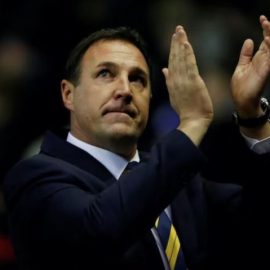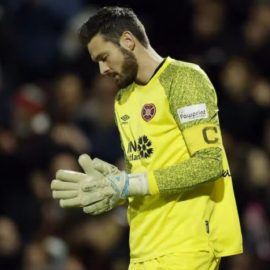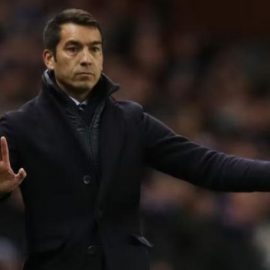If you live outside of Scotland, the chances are that you pay little or no attention to the domestic game of football played in this beautiful and historic country. In all fairness there are probably a number of Scots themselves who prefer to divert their gaze further south of the border to ensure they receive their football fix. It’s not that you’re ignorant to Scottish football by any stretch of the imagination but if you’re like me, you simply fail to have any interest in a top-flight league that comprises of just 12 teams and is annually contested by only two.
So how exactly do you improve the reputation of Scottish football and entice more people to watch it? How about making Celtic and Rangers start a match with only nine players or perhaps try banishing the offside rule? Obviously I’m talking nonsense but the bigwigs at the Scottish Premier League (SPL) really do think they have the answer and you may be a little surprised to hear what it is.
SPL2 — What it’s all about
Around two and a half years ago, SPL officials devised what they believed was a revolutionary plan that would attempt to restructure the elite level of Scottish football. They hoped to create a second SPL division rather unimaginatively titled ‘SPL2’ that would consist of ten teams and would be up and running by the 2008/09 season.
As we know, it didn’t happen as strong opposition unsurprisingly fronted by the Scottish Football League (who have always had a rocky relationship with the SPL since its inauguration back in 1998) managed to derail the possibility of SPL2 with 22 out of 30 member clubs voting against its inception back in 2007. The then SFL president John Smith simply wouldn’t have it, but discussions of SPL2 have resurfaced in recent weeks and they are gathering pace with every day that passes.
There have even been suggestions that SPL2 could come into force ready for next season. A tad optimistic methinks but testament to the reality that, whether fans of Scottish football like it or not, the SPL2 may not be too far around the corner. Indeed last month a three-man arbitration panel set-up by the Scottish Football Association (SFA) took unprecedented steps by giving the SPL the green light to go ahead with their project.
If everything goes according to plan for the SPL, a second Scottish Premier Division will be created and clubs from the Scottish First Division will be invited to join. After this, the SPL would consist of two divisions of 22 clubs in total.
The pros and cons
SPL chiefs have talked up the SPL2 proposal claiming it will “enhance and strengthen” the Scottish game going into the future. I can’t say I agree with this statement but I will nonetheless attempt to identify what the benefits may be for those clubs who choose to be involved with SPL2.
Well with the prospect of a new lucrative TV deal SPL clubs would be protected by a financial safety net where the spread of wealth would be shared amongst the respective 22 clubs. Although there is no solid evidence to suggest that this TV deal is actually going to surface. Setanta have been mooted as potential investors, but with the current abysmal state of the economy they may be better served investing their cash in other sporting avenues. Besides, with all due respect, Clyde vs Airdrie United is still the same fixture regardless of a divisional name change and the majority of supporters with any interest in watching such a match are more likely to attend in person.
There has been talk that the implementation of SPL2 will lead the way to a pyramid system in Scottish football, much like that currently in place in England. My argument with this suggestion is why not take a far simpler route and accommodate 18-20 teams in one, easily manageable SPL division?
The main concern for Scottish football is the precarious situation that clubs outside the top-flight could quite legitimately find themselves in if SPL2 is given the go-ahead. In this sense, the rich will get richer and the poor will get poorer as cash-strapped clubs in the Scottish Second and Third Divisions drift further into the distance. Although fear not, there may be light at the end of the tunnel and from arguably one of the most unlikely of sources.
Celtic and Rangers Reserves
How could you possibly go about increasing attendances in a league that boasts the likes of Elgin City, Dumbarton and Stenhousemuir and seldom attracts supporters to grounds beyond the 1000 mark? It seems a near impossible mission right? Well Celtic and Rangers really could have the answer.
By fielding their second-string sides in the lower echelons of Scottish football, attendances would surely rise to see the likes of Massimo Donati, DaMarcus Beasley and rising stars such as John Fleck and Ben Hutchinson (who have all featured for their respective reserve teams this season). Just the mere presence of the Old Firm, albeit in the form of their reserves, would undoubtedly go a long way to convincing fans to make the trip to their local football ground as opposed to sitting lazily in front of the television set listening to Alan Lambourn reel off Saturday’s results.
Similar systems already exist elsewhere in Europe and are seemingly a resounding success for all parties concerned. In Spain for instance, a total of 13 La Liga clubs all possess B teams that compete in the same Spanish football league pyramid. The majority (including Real Madrid Castilla and Barcelona B) participate in the third tier of Spanish football although Sevilla Atletico (or just Sevilla B to you and me) are currently battling relegation from the Segunda División which coincidentally is only one league below La Liga.
You may now be wondering what on earth would happen if, for example, Sevilla Atletico were to suddenly surge up the table to the the brink of promotion to La Liga with their parent club still competing in Spain’s equivalent of the Premier League. A conflict of interest would occur no doubt. Although Spanish officials have in place a fundamental rule that states that reserve teams are ineligible to play in the same division as their senior team. So with that problem addressed, why can’t Scotland follow in the footsteps of their Spanish counterparts?
The obvious stumbling block for the elite teams in Scotland would be the small matter of convincing so-called ‘star names’ to turn out for the reserves in the Third Division. We all know that footballers thrive on the glitz and glamour of the professional game these days but I fail to see how sufficient levels of excitement can be stimulated from playing in front of 2,000 fans at grounds like the Strathclyde Homes Stadium. In this sense, youth team players would undoubtedly be called upon but is it fair to assume that this is the best possible solution?
The likes of Raul, Iker Casillas, Lionel Messi and Carles Puyol have all progressed through the ranks with their respective B sides and this could be a promising blue print for Scottish officials to consider. The problem is that if young and up and coming players do regularly turnout for their reserve team in the Scottish Third Division, what will be the point of an SPL Under 19’s League? Would it become defunct, soon to be banished from the memory and would anyone really care for that matter?
What happens next?
Revolutionary or not, SPL2 could quite conceivably be introduced in the not too distant future. A meeting involving the 12 member clubs of the SPL is due to be held this month asking their opinion on the project.
As for the SFL, they would be powerless to prevent member clubs from applying to be a part of SPL2. A request that clubs provide two years notice before they inevitably jump ship being the only jurisdictional power they have in the situation.
So is all this talk of SPL2 simply a rebranding mission and will it really change the face of Scottish football? A change in name for the First Division will evidently not improve the standard of players plying their trade in Scotland, nor will it spark a sudden influx of foreign imports over to the SPL.
It has been suggested on more than one occasion in the past that Celtic and Rangers should join the English Premier League. This would create far more of a spectacle among a greater number of teams at the top of the SPL but realistically speaking, where would Scottish football be without the Old Firm?
If you want to hear more about Scottish football and the SPL2 proposal, tune into this week’s Soccerlens Podcast featuring the Guardian’s Ewan Murray where Darwin and Murray discuss the SPL 2, Scotland’s chances for World Cup qualification and lots more.
Add Sportslens to your Google News Feed!






